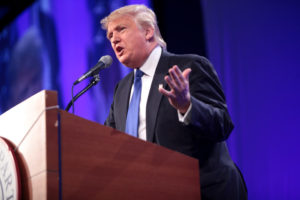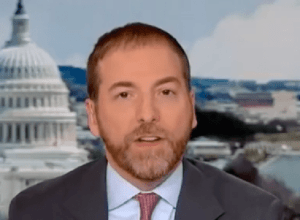The Dirty History of the Nuremberg Laws
Historical anniversaries are typically an occasion for remembrance, but the content of what and why we remember is always changing -- and sometimes a matter of argument. Historical anniversaries are typically an occasion for remembrance, but the content of what and why we remember is always changing.
Historical anniversaries are typically an occasion for remembrance, but the content of what and why we remember is always changing — and sometimes a matter of argument.
Take, for example, the 1935 Nuremberg Laws, whose passage 75 years ago in Nazi Germany transformed Jews from citizens to inferior subjects. To Hitler’s regime, the laws were a marker along the triumphant journey to the thousand-year Reich, to be celebrated as the purging of a deadly microbe from the political body of a resurrected Germany. To Jews, the laws represented a signpost pointing to the dead end ahead.
On Oct. 6, the National Archives will display the one-and-only original Nuremberg Laws for the first time in the nation’s Capitol. We can make sense of the documents only in historical context, but what context to choose? There are debates among historians about the significance of the Nuremberg Laws for the Nazi state, and among curators about the pros and cons of displaying icons of fascism. And let’s not forget the seamy story of how the documents ended up in the United States through the machinations of a celebrated American general and a world-famous library — or the even more disturbing story about the mutually appreciative relationship between the Nazi and American eugenics movements.
First, the facts about which there’s no dispute. The laws — so-called because Hitler ordered their passage in Nuremberg during the Nazi Party’s 1935 rally — consisted of three separate pieces of legislation that were rubber-stamped by the Reichstag in an atmosphere of fascist pomp. The Reich Flag Law replaced the colors of the Weimar Republic with the swastika. The Reich Citizenship Law established a distinction between “citizens of the Reich,” who were entitled to full political and civil rights, and “subjects” who were excluded from those rights. The third statute, known as the Blood Law, legislated the subordinated status of Jews by prohibiting marriage or sexual relations between Jews and German citizens, the hiring by Jews of German citizens under the age of 45 as servants, and flying the German flag by Jews.
The Nuremberg Laws codified segregation and anti-Semitism into legislation. It is only recently that popular histories of Nazism have identified the laws, in the words of Michael Berenbaum, as “the first step towards destruction.” But long before 1935, Hitler’s vitriolic hatred of Jews was a centerpiece of his politics. “The mightiest counterpart to the Aryan is represented by the Jew,” he wrote in “Mein Kampf” in 1925. And when the Nazis assumed power in 1933, they quickly barred Jews from public office and most professions. Two years later, the Reichstag confirmed racist policies that were already well under way. It may be symbolically powerful, but not the most accurate history, to suggest that the road to Auschwitz began in Nuremberg in 1935.
As specialists in German history have observed, the Nuremberg Laws are important as an example of the 400 decrees and regulations through which the Nazi regime translated its obsession with racial hygiene into “a routine process of problem-solving,” in the words of Zygmunt Bauman. “Bureaucracy made the holocaust. And it made it in its own image.” The laws illustrate how the idea of genocide became a popular political project, requiring the mobilization of millions of active and passive supporters.
For descendants of victims of Nazism, the Nuremberg Laws have another kind of appeal: Hitler’s illegible signature scrawled on the four-page, typewritten laws. His signature is quite common to collectors, but in the absence of documents signed by Hitler ordering the mass murder of Jews, the Blood Law is widely regarded as a physical relic of the Holocaust. Consequently, for many people the documents themselves prompt memories of terror. But there’s also the danger that Hitler’s signature might pander to a fascination with notoriety among some history buffs and neo-Nazis. Not surprisingly, German museums, as well as the National Archives, are careful to limit public access to Hitler memorabilia.
There’s also an important American twist to the story that deserves remembrance. The original Nuremberg Laws ended up in the United States because Gen. George Patton pocketed them for personal use in violation of Gen. Dwight D. Eisenhower’s order to collect important Nazi documents for possible use as legal evidence. Patton stashed the laws at the prestigious Huntington Library in Southern California; after his 1945 death, library officials kept the documents off the books for 54 years, preserved in a bombproof vault, without disclosing their presence to scholars or the public.
In 1999, the Huntington announced its ownership of the Nuremberg Laws, but failed to carry out a title check, despite its suspicion that, in the words of a senior curator, the documents “seem pretty clearly to be war loot.” Moreover, the library publicized without verification a statement fabricated by Patton that he had received the documents lawfully from one of his generals in a “great public presentation.”
The Huntington chose not to display the Nuremberg Laws, instead loaning them “indefinitely” to the Skirball, a Jewish cultural center in Los Angeles, without informing the center of the documents’ dubious provenance. A few weeks ago, the Huntington yanked the Nuremberg Laws from the Skirball without consultation and did what should have been done in 1945: It turned over the laws to the National Archives, where they would have ended up with thousands of other Nazi materials. But even now, in full knowledge of the library’s role, the Huntington failed to acknowledge its own complicity in covering up the malfeasance of a war hero. No doubt, the close relationship of the Huntington and Patton families, and the centrality of Gen. Patton in the origins story of the library account for this selective amnesia.
But the collusion of the Huntington in Patton’s theft is not the only issue that should be remembered. More significantly, Patton and several academics at the Huntington — openly from the 1930s until U.S. entry into the war, and privately through the 1950s — supported the racist and anti-Semitic ideology embedded in the Nuremberg Laws. Patton grew up with a romantic affinity to the “lost cause” of the Confederacy, was a lifelong white supremacist, and flirted with fascist ideas. He remained convinced during the war that “a colored soldier cannot think fast enough to fight in armor.” And at the end of the war, he confided in his diary and letters home that Jews were “lower than animals” who “never had any sense of decency or else they lost it during their period of internment by the Germans.”
Meanwhile, back at the Huntington, leading members of the board of trustees — including the Nobel prize-winning physicist Robert Millikan — were active and enthusiastic supporters of the Human Betterment Foundation, a right-wing eugenics think tank in Pasadena with close ties to Nazi “racial scientists.” Like their counterparts in Germany, they too advocated sterilization of the “socially unfit,” bans on “miscegenation,” and policies of apartheid as a means to cleanse the body politic of racial impurities.
It’s fitting that the original Nuremberg Laws will now be preserved at the National Archives. Hopefully, the documents will be displayed on their 75th anniversary as more than a symbol of Nazi injustice. There are also lessons to be taught about what happened here as well as over there: low dealings in high places, homegrown racism, and the blurred line between fascism and democracy.
Tony Platt is the author, with co-researcher Cecilia O’Leary, of “Bloodlines: Recovering Hitler’s Nuremberg Laws, From Patton’s Trophy to Public Memorial.” He blogs on history and memory at GoodToGo.typepad.com.
Your support matters…Independent journalism is under threat and overshadowed by heavily funded mainstream media.
You can help level the playing field. Become a member.
Your tax-deductible contribution keeps us digging beneath the headlines to give you thought-provoking, investigative reporting and analysis that unearths what's really happening- without compromise.
Give today to support our courageous, independent journalists.






You need to be a supporter to comment.
There are currently no responses to this article.
Be the first to respond.